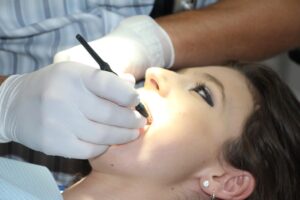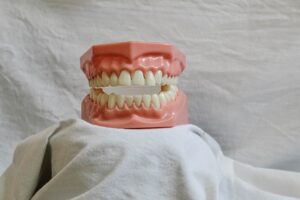Obstructive sleep apnoea is a breathing disorder that affects many people’s quality of life. It occurs when the upper airway repeatedly collapses during sleep, interrupting breathing. As a result, oxygen levels in the blood are reduced, which negatively impacts the quality of sleep and leads to a feeling of constant fatigue throughout the day. Fortunately, there is an effective solution to combat this: orthognathic surgery.
How to detect and diagnose the disorder
Obstructive sleep apnoea (OSA) can manifest itself in the form of heavy snoring, pauses in breathing followed by gasping or snorting, and daytime sleepiness. However, many people are unaware that they have it because the main symptoms occur during sleep.
At Birbe Clinic, we use home polygraphy to diagnose this condition. This is a study that records variables such as heart rate, air flow, oxygen saturation, snoring and changes in position during sleep. With all this data, we calculate the rate of apnoeas and hypopnoeas per hour and determine whether it is mild, moderate or severe OSA.
Once the diagnosis is made, the best treatment is sought in each case, ranging from implementing some lifestyle changes to surgical solutions, depending on the patient. Among the most common alternatives are:
- CPAP (Continuous Positive Airway Pressure). This device provides a constant stream of air that keeps the airway open. Although effective, many people find it uncomfortable and difficult to use long-term.
- Mandibular Advancement Devices (MAD). These devices move the jaw forward to prevent airway obstruction, but may cause changes in tooth position or discomfort in the temporomandibular joint.
- Orthognathic surgery. This is the most effective and definitive option, especially in severe cases of sleep apnoea. It corrects irregularities in facial bone structure by repositioning the jaw bones, eliminating airway obstruction during sleep and significantly widening the upper airway.
The choice of treatment depends on the severity of the apnoea and the needs of each patient. At Birbe Clinic, we evaluate each case individually to recommend the most appropriate solution. Although non-surgical options may be useful, orthognathic surgery remains the only definitive alternative for those seeking permanent results.
Orthognathic surgery: the definitive solution
In many cases, the best treatment for sleepapnoea is orthognathic surgery because it addresses the structural cause of the problem. This procedure corrects the position of both the upper jaw and mandible, widening the upper airway to ensure unobstructed and uninterrupted breathing during sleep.
Before the surgery is performed, Birbe Clinic’steam of experts carry out a thorough assessment to identify the specific causes of the patient’s OSA. This allows a precise and personalised intervention to be planned. And, once the surgery is completed, the patient will be given some medical recommendations to follow, including an adapted diet, avoiding any pressure on the repositioned bones and attending the scheduled check-ups. The accompaniment is total, from the first visit to the final recovery.
The benefits of this intervention can be summarised in these three:
- Symptom reduction. Patients who undergo orthognathic surgery often experience a significant reduction in snoring and breathing pauses.
- Improved sleep quality. By removing obstructions, restful sleep is achieved.
- Prevention of complications. The risk of high blood pressure, cardiovascular disease and other OSA-related conditions is also reduced.
Our goal is for you to regain the ability to breathe freely, enjoy a restful sleep and improve your overall health. If you suffer from obstructive sleep apnoea, contact us and find out how we can help you transform your life.
We are specialists in orthognathic surgery. If you are looking for a definitive and personalised sleep apnoea treatment , the Birbe Clinic team will help you. You can call us on 34 932 124 737, send us a whatsApp to 34 626852363 or write to us at clinica@birbe.org.
Article written by the Birbe Editorial Committee



